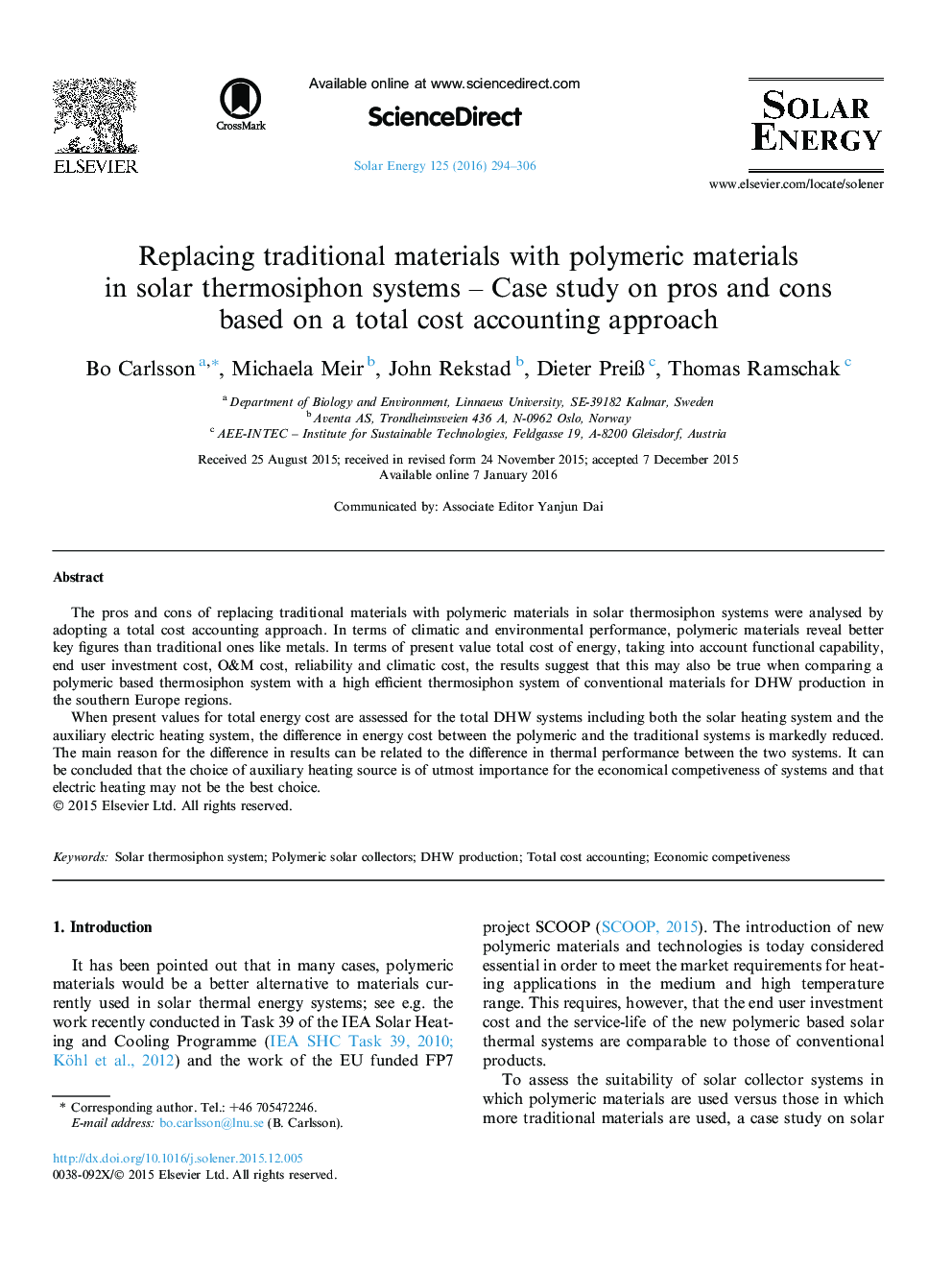| Article ID | Journal | Published Year | Pages | File Type |
|---|---|---|---|---|
| 1549495 | Solar Energy | 2016 | 13 Pages |
•The pros and cons of replacing traditional materials with polymeric materials in solar thermosiphon systems were analysed by adopting a total cost accounting approach.•In terms of climatic and environmental performance, polymeric materials reveal better key figures than traditional ones like metals.•In terms of present value total cost of energy this may also be true when comparing a polymeric based thermosiphon system with a high efficient thermosiphon system of conventional materials.•When present values for total energy cost are assessed for the total DWH systems including both the solar heating system and the auxiliary electric heating system, the difference in energy cost between the polymeric and the traditional systems, however is markedly reduced.
The pros and cons of replacing traditional materials with polymeric materials in solar thermosiphon systems were analysed by adopting a total cost accounting approach. In terms of climatic and environmental performance, polymeric materials reveal better key figures than traditional ones like metals. In terms of present value total cost of energy, taking into account functional capability, end user investment cost, O&M cost, reliability and climatic cost, the results suggest that this may also be true when comparing a polymeric based thermosiphon system with a high efficient thermosiphon system of conventional materials for DHW production in the southern Europe regions.When present values for total energy cost are assessed for the total DHW systems including both the solar heating system and the auxiliary electric heating system, the difference in energy cost between the polymeric and the traditional systems is markedly reduced. The main reason for the difference in results can be related to the difference in thermal performance between the two systems. It can be concluded that the choice of auxiliary heating source is of utmost importance for the economical competiveness of systems and that electric heating may not be the best choice.
